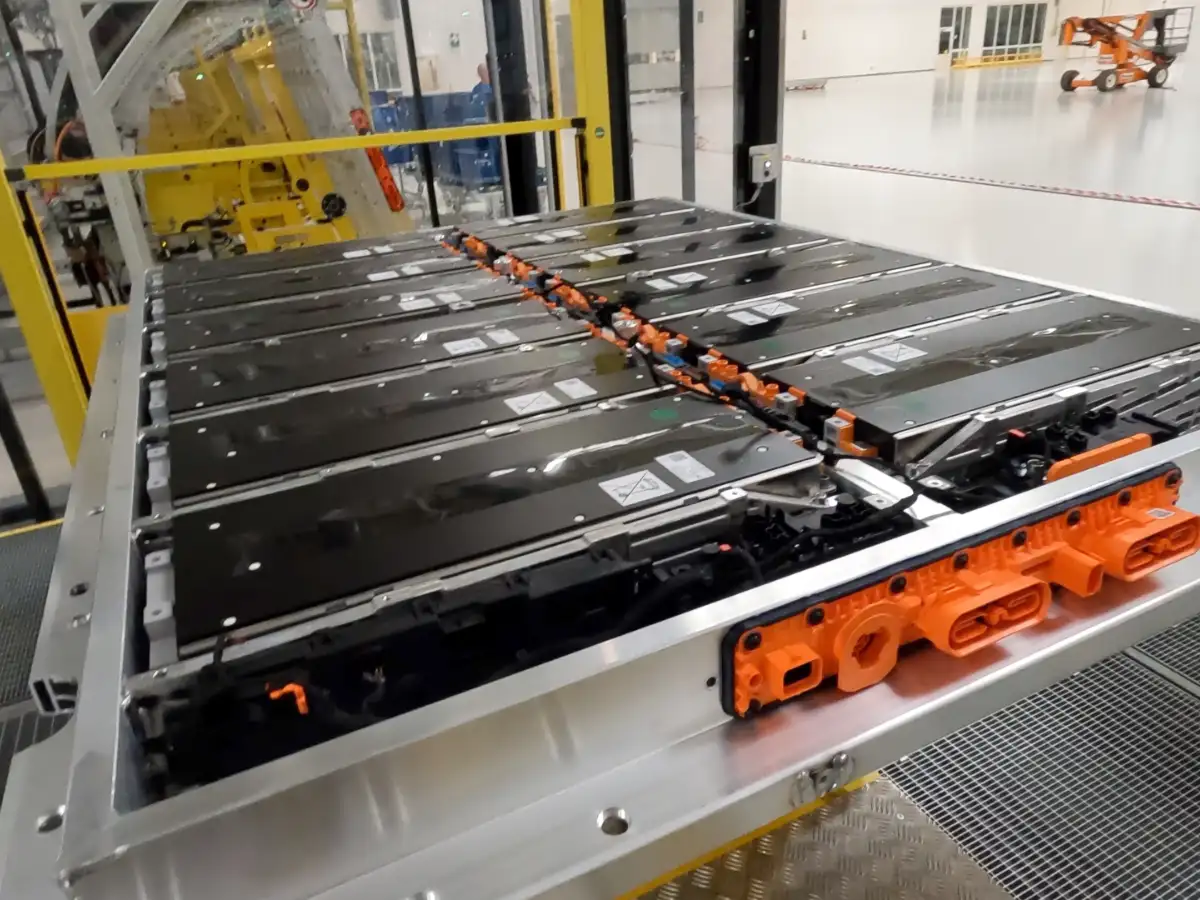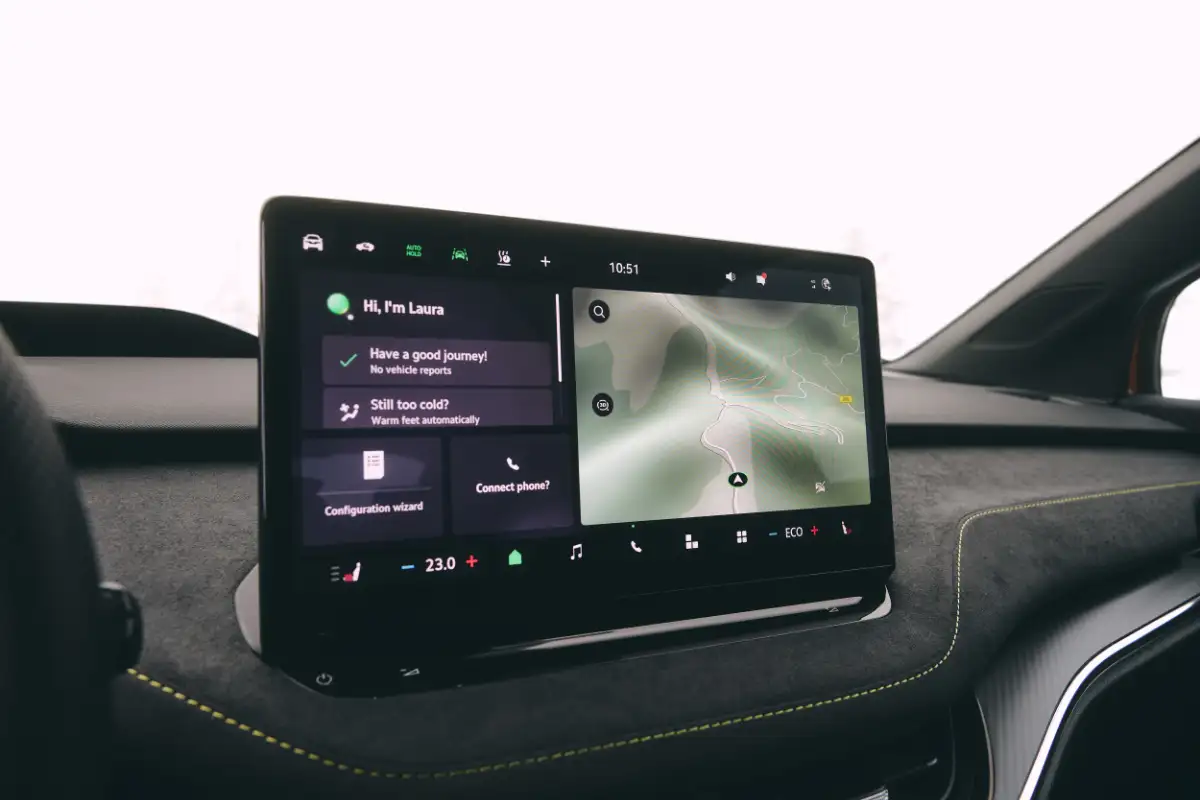A Technical Look into the Power Source of Your Electric Car
Electric vehicles have become an indispensable part of modern life. But how does the power source of these vehicles actually work? In this article, I take a detailed look at battery technology, particularly using the example of the LG Chem battery in the Škoda ENYAQ and ELROQ. Discover how the battery is constructed, the role of voltage and current, and how these factors determine charging performance. You don’t need a degree in electrical engineering for this—just a bit of curiosity.
The Battery – More Than Just a Large Block
The battery in the Škoda ENYAQ (and other MEB vehicles) does not consist of “one large block,” but rather of several modules—and within those, many individual cells.
Structure:
- A module contains 24 cells
- These modules are combined to form a battery unit
Example:
- ENYAQ & ELROQ 50 = 8 modules
- ENYAQ & ELROQ 60 = 9 modules
- ENYAQ & ELROQ 85, 85x, RS = 12 modules
These modules are internally connected—either in series or in parallel.
Summary: The battery in the Škoda ENYAQ consists of several modules, which in turn are made up of many individual cells. The connection of these cells, either in series or parallel, determines the voltage and capacity of the battery.
Series vs. Parallel Connection – Briefly Explained
To ensure the battery provides both the correct voltage and sufficient current, cells are combined:
- Series Connection: Here, + is connected to -, the voltage adds up
- Parallel Connection: Here, + is connected to + and – to -, the current (capacity) adds up
Simple Example:
- Two 1.5 V batteries with 2300mAh in series: → 3 V, 2300mAh
- Two 1.5 V batteries in parallel: → 1.5 V, 4600mAh
Summary: The connection of cells in series or parallel determines how the voltage and capacity of the battery add up.
Connection Pattern of MEB Batteries
The modules in Škoda electric vehicles are individually connected as follows:
- ENYAQ 50/60: 12 cells in series, 2 in parallel (12s2p)
- ENYAQ 85/85x/RS: 8 cells in series, 3 in parallel (8s3p)
The modules themselves are then connected in series to achieve the required system voltage. This results in:
| Model | Modules | Cell Connection | Result |
|---|---|---|---|
| iV 50 | 8 | 12s2p | 96s2p |
| iV 60 | 9 | 12s2p | 108s2p |
| iV 85/85x/RS | 12 | 8s3p | 96s3p |
Summary: The connection of modules and cells in the LG Chem battery is crucial for the system voltage and capacity.
What Voltage and Capacity Does the Battery Have?
Let’s look at the data of the LG Chem E78 cell type, which was used in all ENYAQ iV models until the ENYAQ facelift in 2023. After that, it was switched to the E79 type. Unfortunately, I do not know the data of the CATL cell or those of the other suppliers.
Here, using the example of the ENYAQ iV 80, 80x, and RS:
- Cell Capacity: 78 Ah
- Total Capacity through Parallel Connection: 3 cells x 78 Ah = 234 Ah
- Nominal Voltage of a Cell: 3.67 V
- Total Nominal Voltage through Series Connection: 96 cells x 3.67 V = 352 V
This results in the energy content: 234 Ah × 352 V ≈ 82 kWh (gross)
- Charging Cut-off Voltage: 408 V, in reality limited to about 400 V
- Discharging Cut-off Voltage: 240 V, in reality limited to about 280 V
What Do the Terms Around Voltage Mean?
- Nominal Voltage: The nominal voltage is the typical operating voltage of a cell under normal conditions. It is a guideline for the voltage at which the cell operates most efficiently.
- Charging Cut-off Voltage: The maximum voltage that a cell can reach when it is fully charged. This voltage is higher than the nominal voltage and signals that the cell is full and no further charging should take place.
- Discharging Cut-off Voltage: The minimum voltage at which a cell is considered discharged. If the voltage of a cell drops to this value, it should not be discharged further to avoid damage.
For this reason, the models were given the number 80 in their names. 82 did not sound good for marketing, and so 80 was a logical choice. After that, it became 85, a number that again has nothing to do with the actual gross capacity.
This capacity is based on the data from the cell manufacturer LG Chem under very specific conditions (regarding temperature, 25°C) and represents the maximum. If this were used, the result would be premature aging. Therefore, about 5 kWh is locked as a safety reserve in the Battery Management System (BMS). The usable energy is thus about 77 kWh.
Summary: The voltage and capacity of the battery depend on the cell capacity and the connection. The usable energy is about 77 kWh.
How Is Charging Power Determined?
Charging power (kW) is also determined by voltage × current (P = U × I). For fast charging, this means: the higher the current at a given voltage, the faster energy flows into the battery.
Example: DC Charging with 175 kW
- Charging Cut-off Voltage: approx. 400 V
- Charging Power: 175,000 W
- → 175,000 W / 400 V = approx. 438 A
This is an enormous current, which can only be maintained continuously if:
- The cell layout can handle this current
- The battery does not get too hot
- The cooling system works well
As soon as a temperature or safety limit is reached, the charging power is reduced. Therefore, not only the maximum value is relevant, but especially how long it can be maintained.
Summary: Charging power depends on voltage and current. Good thermal management is crucial for charging time and cell aging. For this reason (high current), the battery becomes very warm during charging, even in winter.
Why Is Full Power Only Available Briefly?
Power is also drawn from the battery while driving—for example, during acceleration. An ENYAQ or ELROQ 85 calls up to 210 kW of peak power. This means:
- Battery at ~100% SoC: voltage approx. 400 V
- Under load, it drops to ~360 V
- To deliver 210–230 kW, about 640 A of current is needed
- 234 Ah at 640 A → theoretically, the battery would be empty after 22 minutes
- (but it would get too hot beforehand, keyword: internal resistance)
- 230 kW due to losses, as the electric machine requires 210 kW
→ Therefore, the maximum power is only available for 30 seconds—this is completely sufficient in everyday use.
Summary: Maximum power is only briefly available to prevent overheating.
And Why Is Charging More Stressful Than Driving?
During fast charging, a high current is pushed into the battery for many minutes, which is thermally very demanding.
While driving, such currents are only drawn briefly—during acceleration, not continuously. Even at 180 km/h, an electric vehicle usually draws no more than 50–70 kW—significantly less than during 175 kW charging. In everyday life away from the highway, the value is even much lower at 10-30 kW.
Therefore:
- DC charging is often the highest stress for the battery
- Good thermal management determines charging time and cell aging
Summary: Fast charging is thermally more demanding than driving, as high currents flow into the battery over a longer period.





